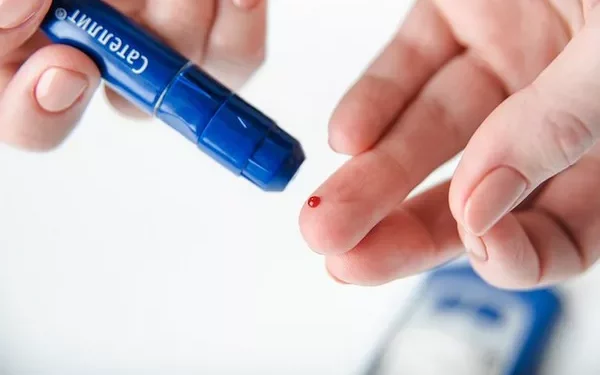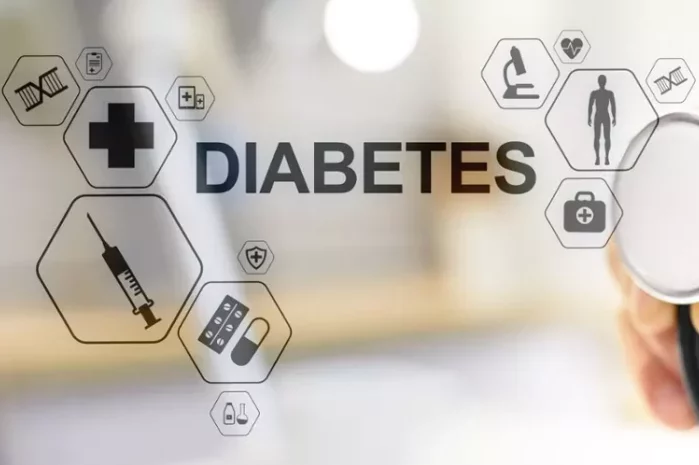Understanding blood glucose levels is crucial for maintaining overall health, especially for individuals with diabetes or those at risk of developing it. Blood glucose, or blood sugar, is the primary source of energy for the body. However, maintaining appropriate levels is essential for optimal health. This article explores the normal range of glucose in the blood, the factors that influence these levels, and the importance of monitoring and managing blood glucose effectively.
Understanding Blood Glucose
Blood glucose refers to the concentration of glucose in the bloodstream. Glucose is a simple sugar that comes from the food we consume, particularly carbohydrates. The body uses glucose for energy, and it is essential for the proper functioning of cells, tissues, and organs.
Why Is Blood Glucose Important?
Energy Source: Glucose is the primary energy source for the body’s cells, especially in the brain and muscles. Maintaining adequate levels is vital for daily functioning and physical activity.
Regulation of Metabolism: Blood glucose levels play a significant role in regulating metabolism. The body must balance glucose levels to ensure that energy is available when needed.
Impact on Health: Abnormal blood glucose levels can lead to various health issues. Low blood glucose (hypoglycemia) can cause weakness, confusion, and even loss of consciousness. High blood glucose (hyperglycemia) can lead to diabetes-related complications, such as heart disease, nerve damage, and kidney problems.
Normal Blood Glucose Levels
Fasting Blood Glucose Levels
Fasting blood glucose levels are measured after not eating for at least eight hours. This measurement is crucial for diagnosing and monitoring diabetes. According to the American Diabetes Association (ADA), normal fasting blood glucose levels are:
Normal: Less than 100 mg/dL (5.6 mmol/L)
Prediabetes: 100 to 125 mg/dL (5.6 to 6.9 mmol/L)
Diabetes: 126 mg/dL (7.0 mmol/L) or higher on two separate tests
Postprandial Blood Glucose Levels
Postprandial blood glucose levels are measured two hours after eating. This measurement helps assess how the body processes glucose after meals. Normal postprandial blood glucose levels are:
Normal: Less than 140 mg/dL (7.8 mmol/L)
Prediabetes: 140 to 199 mg/dL (7.8 to 11.0 mmol/L)
Diabetes: 200 mg/dL (11.1 mmol/L) or higher
A1C Levels
The A1C test measures average blood glucose levels over the past two to three months. It provides a broader view of blood glucose management. According to the ADA, normal A1C levels are:
Normal: Less than 5.7%
Prediabetes: 5.7% to 6.4%
Diabetes: 6.5% or higher
Factors Influencing Blood Glucose Levels
Several factors can affect blood glucose levels, including diet, physical activity, medication, and hormonal fluctuations.
Diet
Carbohydrate Intake: The type and amount of carbohydrates consumed directly influence blood glucose levels. Foods high in simple sugars can cause rapid spikes in glucose levels, while complex carbohydrates are digested more slowly.
Fiber: Foods high in fiber, such as fruits, vegetables, and whole grains, can help regulate blood sugar levels by slowing digestion and the absorption of glucose.
Meal Timing: Eating patterns, such as meal frequency and timing, can also affect blood glucose levels. Regular meals can help maintain stable glucose levels throughout the day.
Physical Activity
Exercise: Regular physical activity helps lower blood glucose levels by increasing insulin sensitivity and promoting glucose uptake by muscle cells. Both aerobic and resistance training can be beneficial.
Sedentary Lifestyle: Conversely, a sedentary lifestyle can lead to increased blood glucose levels due to reduced glucose utilization by the muscles.
Medications
Insulin: Individuals with diabetes may require insulin therapy to manage blood glucose levels. Insulin helps transport glucose from the bloodstream into the cells for energy.
Oral Medications: Other diabetes medications, such as metformin, can help improve insulin sensitivity and reduce glucose production in the liver.
Hormonal Fluctuations
Hormones play a crucial role in regulating blood glucose levels. For example:
Insulin: Insulin lowers blood glucose levels by facilitating glucose uptake into cells.
Glucagon: Glucagon raises blood glucose levels by signaling the liver to release stored glucose.
Cortisol: Stress hormones like cortisol can raise blood glucose levels during times of stress.
Other Factors
Illness or Infection: Physical stress from illness or infection can cause blood glucose levels to rise due to increased insulin resistance and the release of stress hormones.
Dehydration: Dehydration can lead to higher blood glucose concentrations as a result of reduced blood volume.
Sleep Patterns: Poor sleep or irregular sleep patterns can negatively affect insulin sensitivity and blood glucose control.
Monitoring Blood Glucose Levels
Regular monitoring of blood glucose levels is essential for managing diabetes and preventing complications. There are several methods for monitoring blood glucose:
Self-Monitoring of Blood Glucose (SMBG)
Blood Glucose Meters: Home glucose meters allow individuals to check their blood sugar levels at any time. It is important to follow the manufacturer’s instructions for accurate results.
Continuous Glucose Monitoring (CGM): CGM devices provide real-time blood glucose readings through a sensor placed under the skin. These devices can help track trends and fluctuations in glucose levels throughout the day.
Regular Testing
Frequency: The frequency of blood glucose monitoring depends on individual treatment plans, medication types, and lifestyle factors. Some individuals may need to check their levels multiple times a day, while others may do so less frequently.
Timing: Blood glucose levels should be tested at different times, such as fasting, postprandial, and before bed, to provide a comprehensive understanding of blood sugar management.
Managing Blood Glucose Levels
Effective management of blood glucose levels is crucial for overall health. Here are some strategies to maintain normal glucose levels:
Healthy Eating
Balanced Diet: Focus on a balanced diet that includes whole grains, lean proteins, healthy fats, and plenty of fruits and vegetables.
Carbohydrate Counting: For those with diabetes, learning to count carbohydrates can help manage blood sugar levels effectively. This approach involves understanding how many carbohydrates are in each meal and adjusting insulin or medication accordingly.
Portion Control: Monitoring portion sizes can help prevent overeating and maintain stable blood sugar levels.
Regular Physical Activity
Exercise Routine: Establish a regular exercise routine that includes both aerobic and strength-training activities. Aim for at least 150 minutes of moderate-intensity exercise per week.
Incorporate Movement: Find ways to incorporate more movement into daily life, such as taking the stairs, walking during breaks, or engaging in active hobbies.
Medication Management
Follow Prescriptions: Take diabetes medications as prescribed by healthcare providers. Adherence to medication regimens is essential for effective blood sugar control.
Regular Consultations: Schedule regular check-ups with healthcare providers to review and adjust treatment plans as needed.
Stress Management
Mindfulness and Relaxation: Practice stress-reduction techniques, such as mindfulness, meditation, or yoga. Reducing stress can help prevent fluctuations in blood sugar levels.
Sleep Hygiene: Prioritize good sleep hygiene by maintaining a regular sleep schedule and creating a restful sleep environment.
Recognizing Abnormal Blood Glucose Levels
Understanding the signs of abnormal blood glucose levels can help individuals take prompt action to manage their health.
Symptoms of Hypoglycemia (Low Blood Sugar)
Shakiness: Feeling shaky or jittery is a common symptom of low blood sugar.
Sweating: Increased sweating without physical exertion can indicate hypoglycemia.
Confusion: Difficulty concentrating or confusion may occur as blood sugar drops.
Dizziness: Feeling lightheaded or dizzy can signal low blood sugar.
Hunger: An intense feeling of hunger can also indicate hypoglycemia.
Symptoms of Hyperglycemia (High Blood Sugar)
Frequent Urination: Increased urination is a common symptom of high blood sugar.
Thirst: Persistent thirst, known as polydipsia, may occur with elevated glucose levels.
Fatigue: Feeling unusually tired or fatigued can indicate hyperglycemia.
Blurred Vision: Changes in vision may occur due to high blood sugar levels.
Slow Healing: Wounds or cuts may heal more slowly with elevated blood sugar.
When to Seek Help
If symptoms of hypoglycemia or hyperglycemia occur, it is crucial to take appropriate actions. For hypoglycemia, consuming fast-acting carbohydrates, such as glucose tablets or juice, can help raise blood sugar levels quickly. For hyperglycemia, it is important to consult a healthcare provider for guidance on adjusting medications or making dietary changes.
Conclusion
Maintaining normal blood glucose levels is essential for overall health and well-being. Understanding the normal range of glucose levels, the factors influencing them, and effective management strategies can empower individuals to take control of their health. Regular monitoring, a balanced diet, physical activity, and proper medication management are key components of blood glucose management. By recognizing the signs of abnormal blood sugar levels and taking appropriate actions, individuals can minimize the risk of complications and lead healthier lives.
Related topics:
What is the Normal Fasting Blood Sugar (FBS) Result?



























